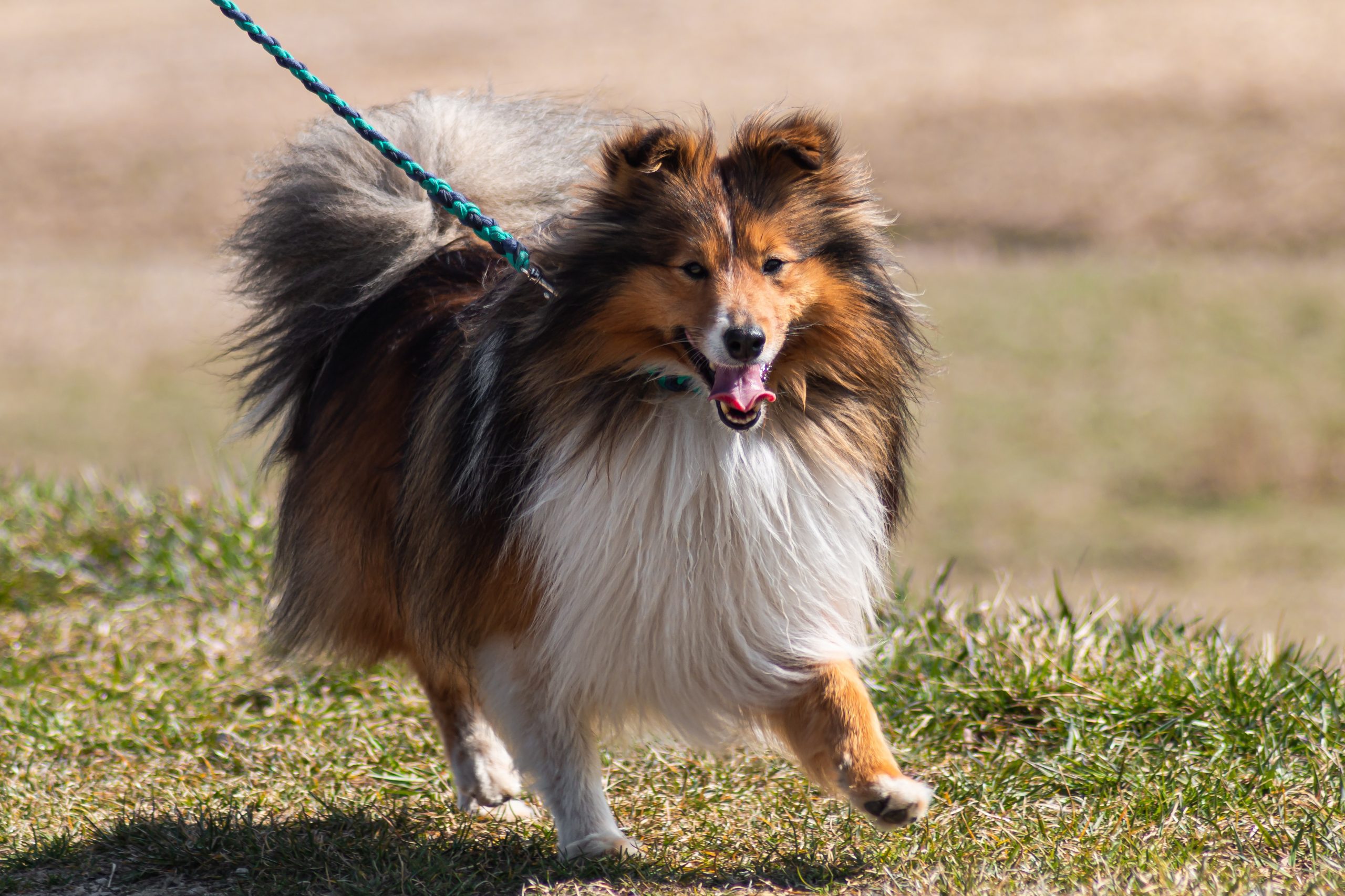In this article, we will explore the unique grooming needs of the Sheltie and provide practical advice for their care. Regular grooming keeps their coat in good condition, prevents matting, and allows for the early detection of potential health issues.
1. The Sheltie Coat: An Overview
Shelties have a double coat with a long, straight, and harsh outer coat and a short, dense, furry undercoat. This combination requires attention to prevent tangles and mats.
2. Regular Brushing: The Cornerstone of Grooming
Brushing a Sheltie 2-3 times per week is essential to remove loose fur and prevent matting. During shedding seasons, daily brushing is recommended.
3. Bathing: A Delicate Frequency
Shelties typically require a bath every 4-6 weeks, but this can vary. It’s crucial to use the right shampoo to protect their skin and coat.
4. Trimming: Less is More
While Shelties do not require extensive trimming, tidying up certain areas such as the feet, hocks, and ears can keep them looking neat.
5. Nail Care: Essential for Comfort
Nail trimming should be done monthly to avoid discomfort and potential health issues due to overgrown nails.
6. Ear Cleaning: A Routine Must-Do
Regular ear checks and cleaning are necessary to prevent wax buildup and potential infections.
7. Undercoat Care: Managing the Shed
The undercoat of a Sheltie will shed seasonally, and during this time, undercoat rakes can be particularly useful in removing dead fur.
8. Tail Grooming: Keeping It Flowing
The Sheltie’s tail is one of its glories and should be brushed regularly to maintain its feathered appearance without mats.
9. Professional Grooming: When to Call In the Experts
Some owners may opt for professional grooming services, especially for thorough de-shedding or for preparing a show Sheltie.
10. Grooming as Health Maintenance
Grooming is not just about appearance; it’s also a health check. Regular grooming sessions are opportunities to check for lumps, skin issues, and parasites.
11. Grooming Tools: The Right Equipment
Using the right tools, including brushes, combs, and nail clippers, is crucial for effective grooming and the comfort of your Sheltie.
12. Addressing Common Grooming Challenges
We will discuss how to deal with common grooming challenges specific to Shelties, such as handling a dog that doesn’t enjoy being brushed.
13. Grooming Throughout the Life Stages
A Sheltie’s grooming needs will change as they grow from a puppy to an adult and then into their senior years.
14. The Importance of Diet in Coat Health
A good diet reflects a healthy coat. We will cover nutritional tips for keeping your Sheltie’s coat shiny and strong.
Conclusion
Grooming your Sheltie is an essential part of their care. It enhances the bond between you and your dog, ensures their coat and skin are healthy, and provides a regular opportunity to monitor their overall well-being. With patience and the right tools, grooming can be an enjoyable experience for both you and your Sheltie.
Frequently Asked Questions About Grooming A Sheltie

1. How often should I brush my Sheltie’s coat?
Brushing your Sheltie’s coat should be done at least 2-3 times a week to prevent matting and tangling, especially in the dense undercoat. During shedding seasons, which typically occur in the spring and fall, daily brushing may be necessary to help manage the increased shedding and remove the loose undercoat.
2. How frequently does a Sheltie need bathing?
A Sheltie should be bathed every 4-6 weeks to keep their coat clean without stripping natural oils. If your Sheltie gets dirty between scheduled baths, spot clean the area with a damp cloth or use dry shampoo formulated for dogs.
3. What type of brush is best for a Sheltie?
A slicker brush is ideal for the outer coat, while a long-toothed undercoat rake is best for removing loose fur from the dense undercoat. Always brush gently to avoid causing discomfort or damaging the skin.
4. Do Shelties require professional grooming?
Shelties can be groomed at home, but professional grooming can be beneficial a few times a year, especially to help with thorough de-shedding and to get tips on proper grooming techniques tailored to your dog’s coat condition.
5. Can I trim my Sheltie’s fur to keep them cooler in the summer?
Trimming for cooling purposes is not recommended for Shelties as their double coat protects them from the heat and sunburn. Instead, ensure they have access to shade and water, and keep them indoors during extreme temperatures.
6. How do I manage my Sheltie’s shedding?
To manage your Sheltie’s shedding, maintain a regular brushing routine, especially during their bi-annual shedding seasons. Incorporating a balanced diet and omega fatty acid supplements can also promote a healthy coat and potentially reduce excessive shedding.
7. What is the best way to check for mats in my Sheltie’s coat?
Regularly run your fingers through your Sheltie’s coat to feel for any mats. Pay special attention to areas prone to matting, such as behind the ears, under the elbows, and around the collar. Gently tease apart mats with a comb or mat splitter.
8. How should I clean my Sheltie’s ears?
Clean your Sheltie’s ears with a vet-recommended ear cleaner by applying the solution to a cotton ball and gently wiping the outer ear. Avoid inserting anything into the ear canal, and only clean the areas you can easily see to prevent injury.
9. What should I do if my Sheltie doesn’t like being groomed?
If your Sheltie is resistant to grooming, start with short, positive sessions, gradually increasing the time as they become more comfortable. Use treats and praise to create a positive association with grooming, and be patient and gentle.
10. Are there any specific areas I should focus on when grooming my Sheltie?
Focus on areas prone to matting and tangling, such as the ruff around the neck, the fringes on the legs, and the feathers on the tail. Also, give attention to their paws and the hair between the pads, keeping them trimmed to prevent debris accumulation.

 Toledo, United States.
Toledo, United States.